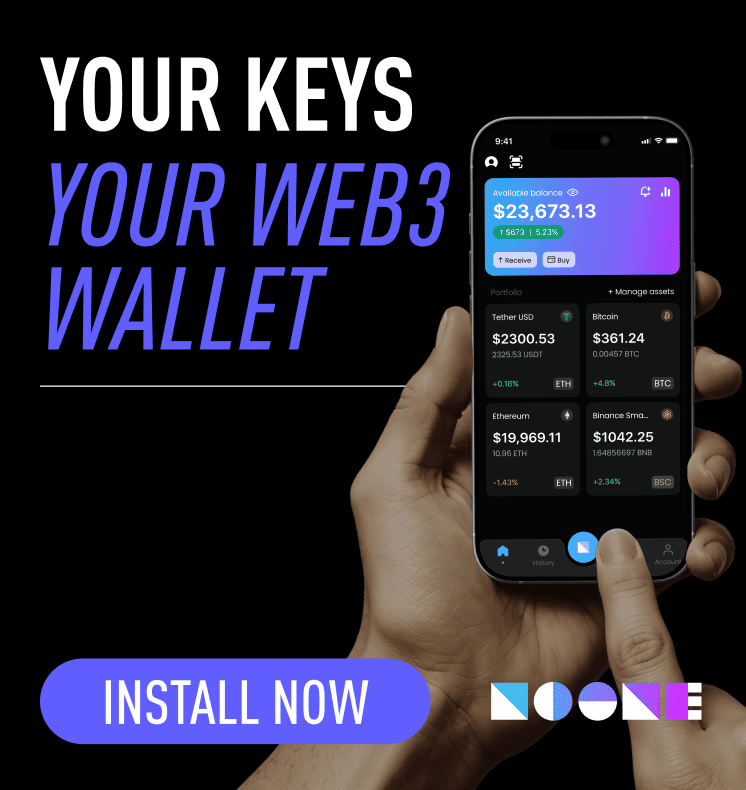Introduction
Academic Labs (AAX) is a learning-focused decentralized knowledge and innovation platform developed using blockchain technology. Academic Labs utilizes Web3 technologies to revolutionize the process of certifying and transferring knowledge in academic and workplace environments. Academic Labs integrates digital identity and verifiable credentials with tokenized rewards to develop an open and collaborative learning environment. In this article, we’ll take an in-depth look at Academic Labs (AAX), its functionality, and its growing presence in the edtech industry.
What is Academic Labs (AAX)?
Academic Labs is an open decentralized learning network built to facilitate knowledge acquisition, collaboration, and credentialing with the power of blockchain. Its mission is to enable an open environment where students, teachers, researchers, and institutions can participate without dependency on central authority. AAX is the native token of the network, and its main task is to enable several of its features like rewards, governance, and service accessibility.
While traditional teaching spaces are locked into closed systems and conventional accrediting agencies, Academic Labs opens the potential for global participation. Any type of learner can amass certifiable credentials, take part in research projects, or contribute to teaching modules.
The AAX token is also at the core of incentivizing management, verification of accomplishments, and voting by the users for the development of the platform. This does not only make Academic Labs a storage of academic content but also an interactive network where the users define the future of the ecosystem.
Laboratory Technology of Academia
Academic Labs’ basis is the blockchain technology, and it ensures transparency and reliability throughout the certification and identity verification process. By means of smart contracts, the website embeds academic credentials, competencies, and accomplishments on-chain so they become tamper-proof and easy to verify.
Decentralized identity (DID) is granted to each individual and is the academic digital passport of the person. This is where credentials, certificates, and participation statements are kept and connected to the blockchain. Since the identities belong to the users themselves, the necessity of third-party verification brokers is no more.
Academic Labs utilizes IPFS (InterPlanetary File System) as well for distributed storage. This allows storage of files such as documents, research articles, and teaching materials in a decentralized way with reduced chances of censorship and loss of information.
In addition, the system has the ability to allow API integration so academic organizations or external services can interact with Academic Labs to award credentials or pull information and thus be compatible with existing academic infrastructure.
Use Cases and Platform Features
Academic Labs is not only uploading of certificates but also an end-to-end featured ecosystem with multiple applications for multiple categories of users. Students can get involved in learning programs, earn badges and credentials, and store them in the profile. Teachers can create content, hold workshops, or view submissions from global learners.
The platform also allows for collaboration in research. Researchers and scientists publish research, peer-review other writings, and get recognition directly from the community members. Timestamp and credit are guaranteed through the use of smart contracts so that credit is provided equally.
Another distinctive characteristic is credential issuance. Academic Labs can be utilized by schools, bootcamps, or even businesses to issue blockchain-supported certifications to students. Credentials are transportable and verifiable so users can take their academic credentials with them across platforms and business sites without the necessity of paper certificates or extended verification chains.
AAX tokens can be used to enable premium features, tip content creators, fund community projects, or vote in governance proposals. The token system structures incentives across the network so participation and contribution are rewarded.
Role of the AAX Token
AAX token is the driving force behind the Academic Labs ecosystem. It serves two purposes: functional and governance. Functionally, AAX is the medium of payments in the ecosystem – whether you’re paying for a course, proposing an idea, rewarding an instructor, or tipping someone for valuable feedback.
Decentralized governance is open to AAX token holders to vote towards decision-making. This includes voting for the modification of features, grants for funds, change of the reward system, and new partnerships. This is to ensure the control of the platform among the users and not in the hands of the central body.
Token holders also receive staking rewards or early research and content drops. This adds an economic participation aspect beyond the typical learning sites.
While AAX functions in its own ecosystem, it can also be traded on select crypto exchanges depending on regional accessibility and listing of exchanges. This gives members the flexibility of switching tokens or purchasing them as the situation warrants in order to participate more intensely in the Academic Labs network.
History and Development of Academic Labs
Academic Labs is founded by educators, technologists, and programmers of the blockchain who saw the possibility of transforming the world educational model. The idea emerged from the necessity to resolve problems of counterfeit diplomas, inefficient certification process, and limited global accessibility of quality education.
It went into development early in 2021 and the first version of the platform was launched in 2022. Since then, it has also incorporated several features such as credential APIs, integration of decentralized storage as well as a research collaboration portal.
During its first phase, the team collaborated with few select universities and computer bootcamps to try out the credentialing system. These early adopters’ feedback was used to refine the site as well as establish the credibility of the site among academic communities.
Since the year 2025, Academic Labs has expanded to serve members from multiple continents and has materials in multiple languages. It continues to add new institutions and individual creators and aspires to become an international repository of authenticated, blockchain-powered education.
Community and Ecosystem Development
Academic Labs relies heavily on its community for its success. Anyone can be a part of the platform and its permissionless model allows participation from anyone outside the conventional education system as well. There are self-taught learners, hobbyists, and freelancers among them.
It includes teachers, developers, learners, and institutions. Academic Labs regularly runs hackathons, learning sprints, and research challenges from where people can win rewards and recognition. These activities also lead to the growth of the knowledge base and the fostering of collaboration.
An active forum and Discord server allow members to vote community proposals, resolve difficulties via troubleshooting, and trade resources. This interaction includes an additional layer of engagement absent from most Learning Management sites.
The team also advocates for local communities and has available translation and content adaptation tools to handle multiple cultures and regions. This lowers the barrier of entry for non-English speaking users and boosts international participation.
Partnerships and Integration
Academic Labs works with academic institutions, research communities, edtech startups, and NGOs to develop an integrated learning ecosystem. Partnerships allow for expanded reach of the platform and integration of blockchain certification with existing systems.
For example, the university can provide its diplomas through Academic Labs while still retaining its classes through its traditional learning management systems (LMS). Meanwhile, the bootcamp can employ the system to provide fast-track certificates after competency-based exams.
API integration from the platform enables external tools to interact with its smart contracts and credential system effortlessly. This is particularly useful for job sites, where the academic claims of job applicants can be authenticated in no time without any additional paperwork.
In chosen cases, companies have used Academic Labs to offer internal certification trainings so employees could track professional growth in an verifiable and transportable way.
How to Start with Academic Labs
Anyone can register on Academic Labs via its web application. The registration process entails the creation of a decentralized identity, which is the academic profile of the user. Users can then browse the content, contribute materials, engage in discussions, or apply to issue credentials from there on.
Institutions and instructors can request to become verified issuers. This puts them in control of developing their own structures for the courses, credentialing requirements, and student cohort management. This process has been streamlined so small networks should find it easy enough to complete; however, it should be malleable enough for larger institutions.
It is voluntary to use the AAX token for basic membership but members desiring to utilise the premium elements or vote as part of governance must hold the tokens in an attached wallet.
It also includes developer and institution documentation for anyone looking to develop on top of its open protocols and lead innovation and third-party applications.
Conclusion
Academic Labs (AAX) is building the new world of worldwide learning with blockchain technology. By combining verifiable credentials, decentralized identity, and community-incentivized collaboration, it is an open and transparent method of people learning, teaching, and collaborating. This ecosystem is powered by the AAX token and enables rewards, governance, and multiple-platform access. Through its growing base of users, partners, and technological capabilities, Academic Labs is also positioning itself as an viable answer to current, decentralized education. With further development of the site, it has the potential to bridge the gap between the current education system and the future digital and self-directed approaches to learning.














 Twitter
Twitter
 Telegram
Telegram
